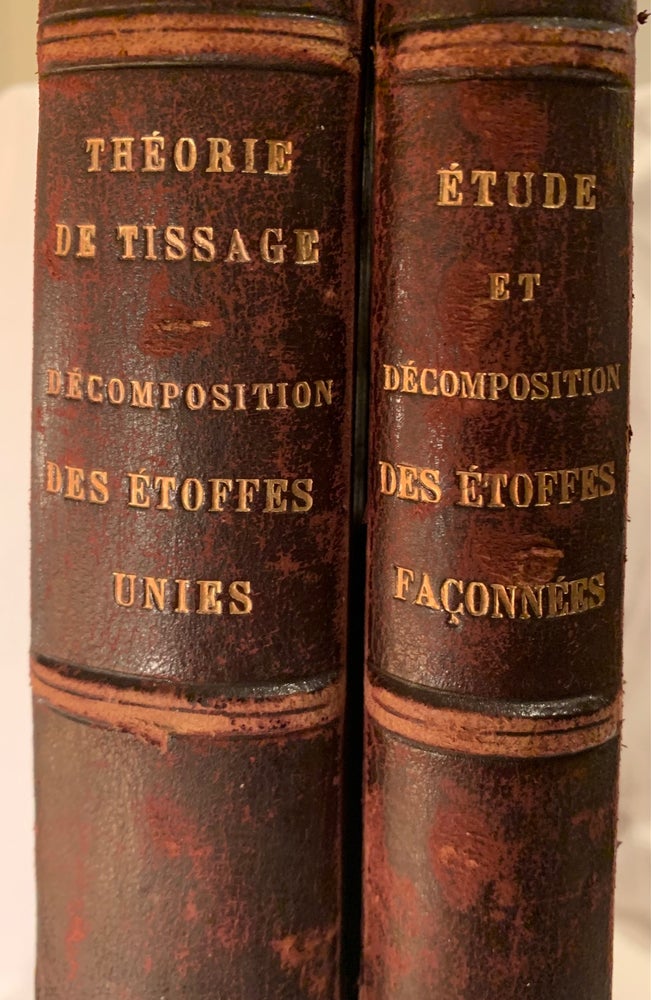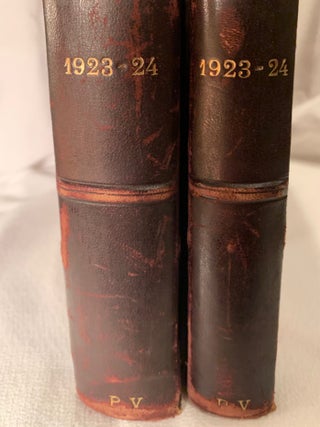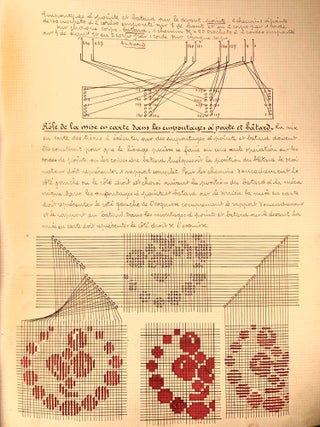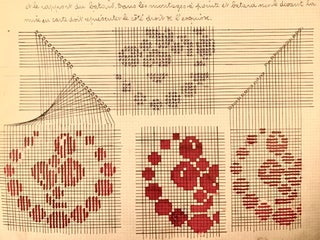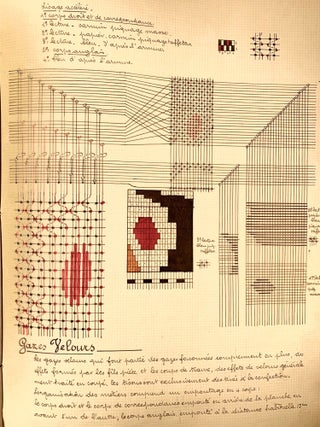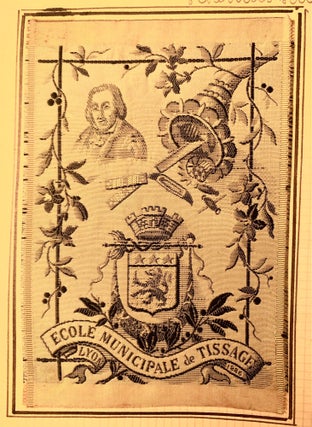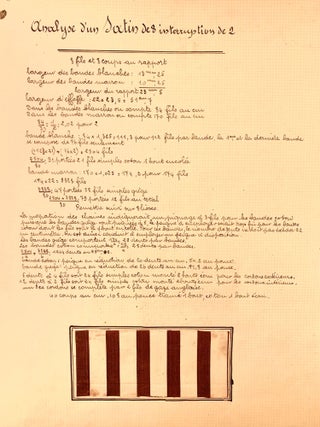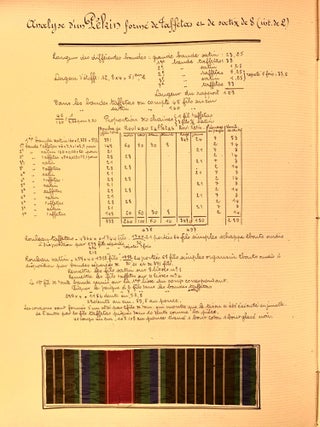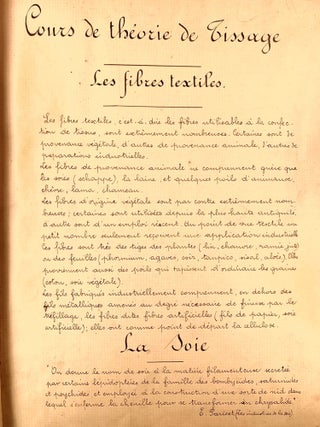Etude et Decomposition des Etoffes Faconnes and Theorie De Tissage--Decomposition des Etoffes Unies
1923-1924. Etude et Decomposition des Etoffes Faconnes and Theorie De Tissage--Decomposition des Etoffes Unies (Study of the Composition of Fashion Fabrics and Weaving Theory Course of Plain Fabrics).
Two volumes, uniformly bound in ½ leather over maroon boards. Title, date and authors initials on spine in gilt. Light scuffing to leather with light soiling to boards. Light foxing and toning to some leaves. Tight binding and clean interiors. Each volume measures 15.5 x 11.5 inches. One volume has pagination in pencil 160pp; second volume not paginated.
Exquisite exemplar of 1920’s manuscript study books on fabrics and weaving. Unknown author other than the initials of “PV” on the spine of both books. Lyons, France was the location of École Municipale de Tissage, or the School of Weaving, and likely source for these volumes, catered to people within the trade but also offered night-time classes for students. Students were required to produce detailed records of their studies and describe and diagram the exact analysis of textiles in terms of the weaving techniques employed to produce various styles and patterns. Each fabric studied is accompanied by an intricate schematic used for setting the loom for the proper weft and warp. The schematics themselves are beautiful, often employing various colored pencils, utilizing the graph paper bound in the book. Some of the more intricate pattern examples are tipped in once the student correctly worked out the equation.
The books include varieties of fabrics including silks, taffetas, crochet patterns, velour, gauzes, embroidered patterns and many more. One volume studies fashion fabric while the second volume plain fabrics. The second half of each volume, students were required to analyze swatches of fabrics tipped into the book. The volumes contain 127 unique swatches fully analyzed by the student.
Both volumes in manuscript in tight exquisite French with bold headings—a level of beauty I cannot imagine a 21st century student accomplishing. I suppose weaving theory is computerized today rendering these beautiful books obsolete. Regardless, these volumes are works of beauty, art and craft. Item #57
Price: $3,000.00

